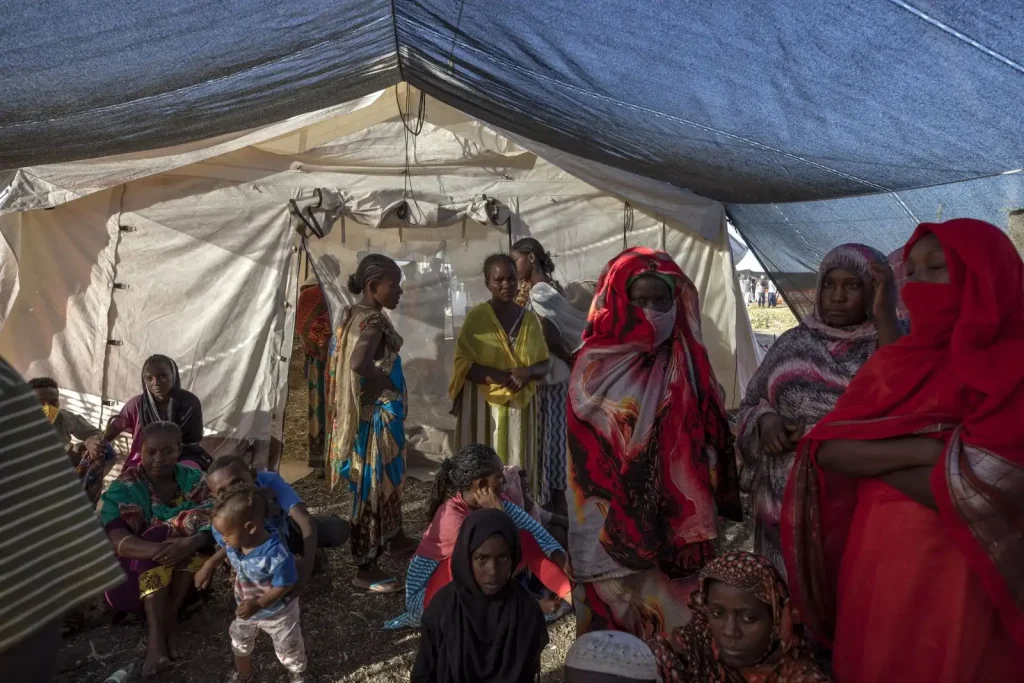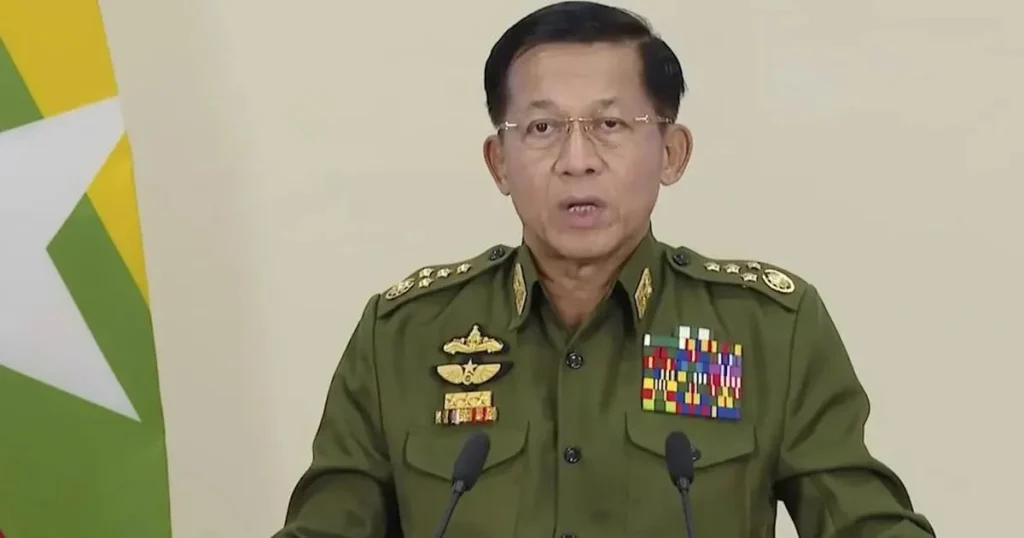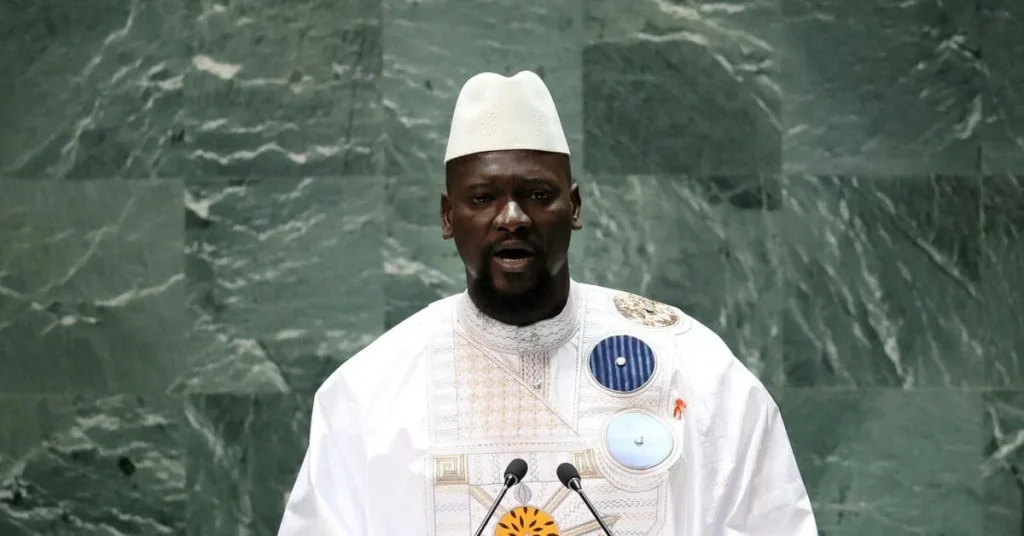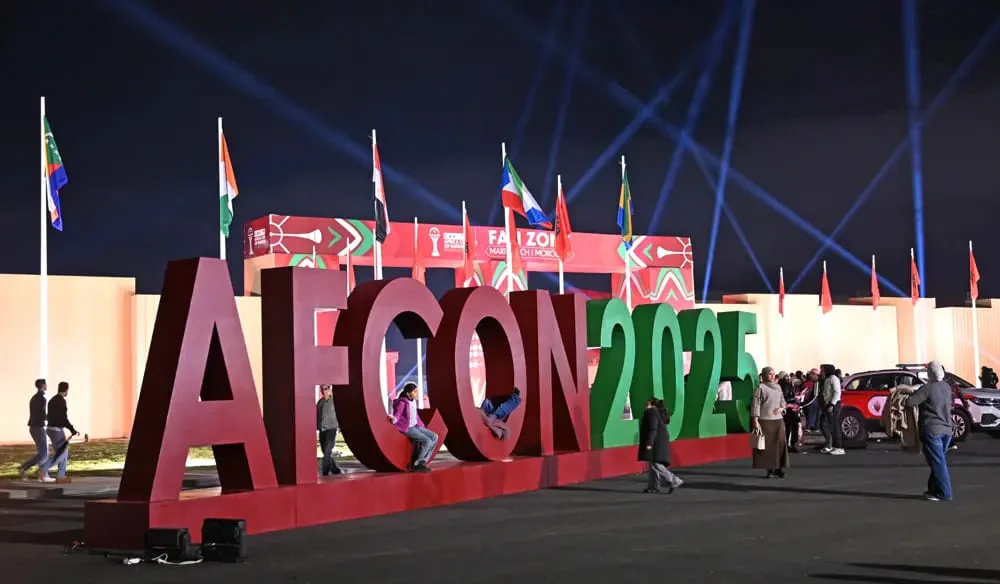Since the outbreak of conflict in Ethiopia’s Tigray region in November 2020, nearly 100,000 Eritrean refugees in four camps—Hitsats, Shimelba, Mai Aini, and Adi Harush—have faced extreme violence and displacement.
The war between Prime Minister Abiy Ahmed’s federal government and the Tigray People’s Liberation Front (TPLF) has left refugees vulnerable to targeted killings, abductions, looting, and sexual violence, primarily by Eritrean forces and pro-TPLF militias.
Hitsats and Shimelba camps remain inaccessible to the United Nations High Commissioner for Refugees (UNHCR) and Ethiopia’s Agency for Refugee and Returnee Affairs (ARRA), with satellite imagery confirming their destruction
Violence and Abuses in Hitsats and Shimelba
Eritrean forces, whose involvement is documented but denied by Addis Ababa and Asmara, occupied Hitsats in November 2020, killing residents and looting the town and camp.
On November 23, pro-TPLF militias attacked Hitsats, killing nine refugees near a church and injuring 17, with one refugee reporting her husband was shot while carrying their children.
Eritrean soldiers later abducted dozens, with at least 26–27 taken to unknown locations, some forcibly returned to Eritrea. In December, Tigrayan forces retook Hitsats, committing further abuses, including sexual assaults and arbitrary detentions.
By January 2021, Eritrean forces destroyed Hitsats, forcing survivors to trek to Sheraro or Badme, with many coerced back to Eritrea. Similar abuses occurred in Shimelba, with 16 refugees killed in January 2021. UNHCR estimates 7,643 of the 20,000 refugees from these camps remain unaccounted for as of August 2021.
Conditions in Mai Aini and Adi Harush
Approximately 3,000 refugees from Hitsats and Shimelba fled to Mai Aini and Adi Harush in southern Tigray, enduring days-long journeys with little food or water, often surviving on moringa leaves.
In Mai Aini, refugees like Girmay and Natnael reported ongoing fear of pro-TPLF militia attacks, despite federal military presence. Access to clean water and shelter remains limited, exacerbating insecurity.
ARRA’s Tesfahun Gobezay claimed progress in restoring services but acknowledged refugees’ persistent sense of insecurity, stating, “Security is more of a feeling than reality.”
Humanitarian and International Response
UNHCR chief Filippo Grandi, visiting Mai Aini in February 2021, described Tigray’s humanitarian situation as “extremely grave,” urging Abiy to protect refugees and investigate abuses.
U.S. State Department cited “credible reports” of looting and sexual violence in the camps, while Human Rights Watch labeled the attacks “evident war crimes.”
The Norwegian Refugee Council’s Jan Egeland criticized impeded aid access, though Ethiopia’s Minister of Peace, Mufarihat Kamil, claimed significant aid delivery, prioritizing mothers and young children.
UNHCR reported over 20 deaths in Mai Aini and Adi Harush in early 2022 due to medicine shortages and contaminated water, amid fears of a cholera outbreak.
Systematic Targeting and Camp Destruction
Satellite imagery from January 2021, analyzed by Human Rights Watch and DX Open Network, shows extensive damage to Hitsats and Shimelba, with burn scars indicating deliberate destruction by Eritrean forces between January 5–8, 2021.
The British-based DX Open Network reported “clear and consistent patterns” of systematic targeting, despite the camps’ protected humanitarian status.
Abiy’s government had planned to close these northern camps before the conflict, a plan Tesfahun claimed was “sabotaged” by the TPLF but is now resuming.
Geopolitical Context
The conflict stems from tensions between Abiy’s government and the TPLF, compounded by Abiy’s 2018 rapprochement with Eritrean President Isaias Afwerki, earning him the 2019 Nobel Peace Prize.
However, Eritrea’s enmity with the TPLF has endangered Eritrean refugees, many of whom fled Eritrea’s indefinite national service, likened to an “open-air prison.”
Pro-TPLF militias targeted refugees for perceived affiliations with Eritrean forces, while Eritrean soldiers forcibly repatriated others, heightening fears of detention in Eritrea.
Ongoing Challenges and Outlook
The fate of thousands of refugees remains unknown, with many unaccounted for or in hiding in urban areas like Addis Ababa, where they receive no assistance. Refugees in Mai Aini and Adi Harush face security threats from militias and resource shortages, with no clear timeline for safe relocation.
The international community, including UNHCR and the U.S., calls for transparent investigations and unimpeded aid, but Ethiopia’s denials of Eritrean abuses and claims of “exaggerated” aid access issues complicate relief efforts.
The destruction of Hitsats and Shimelba underscores the urgent need for protection, as refugees remain caught between warring factions in a volatile region.






